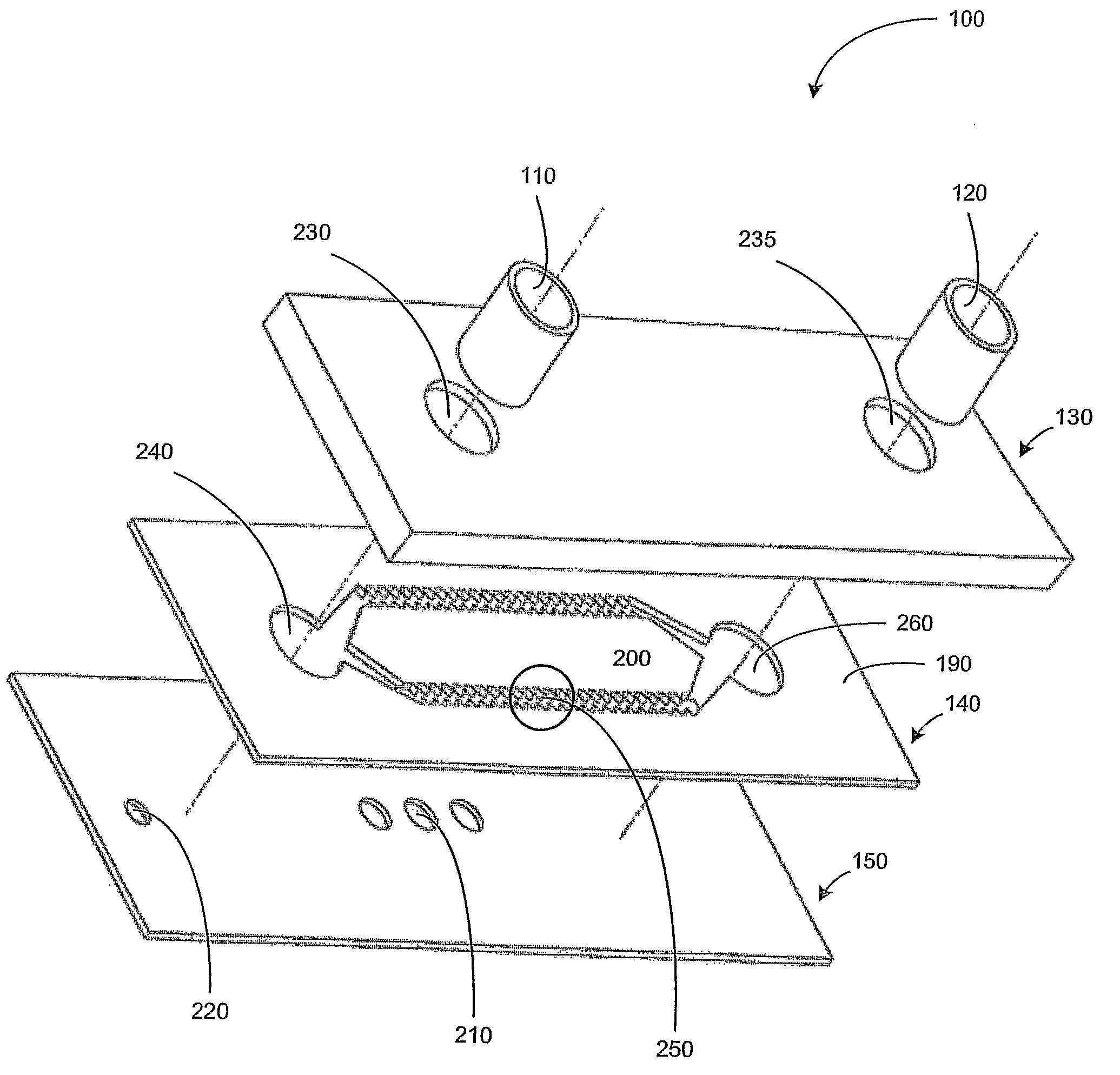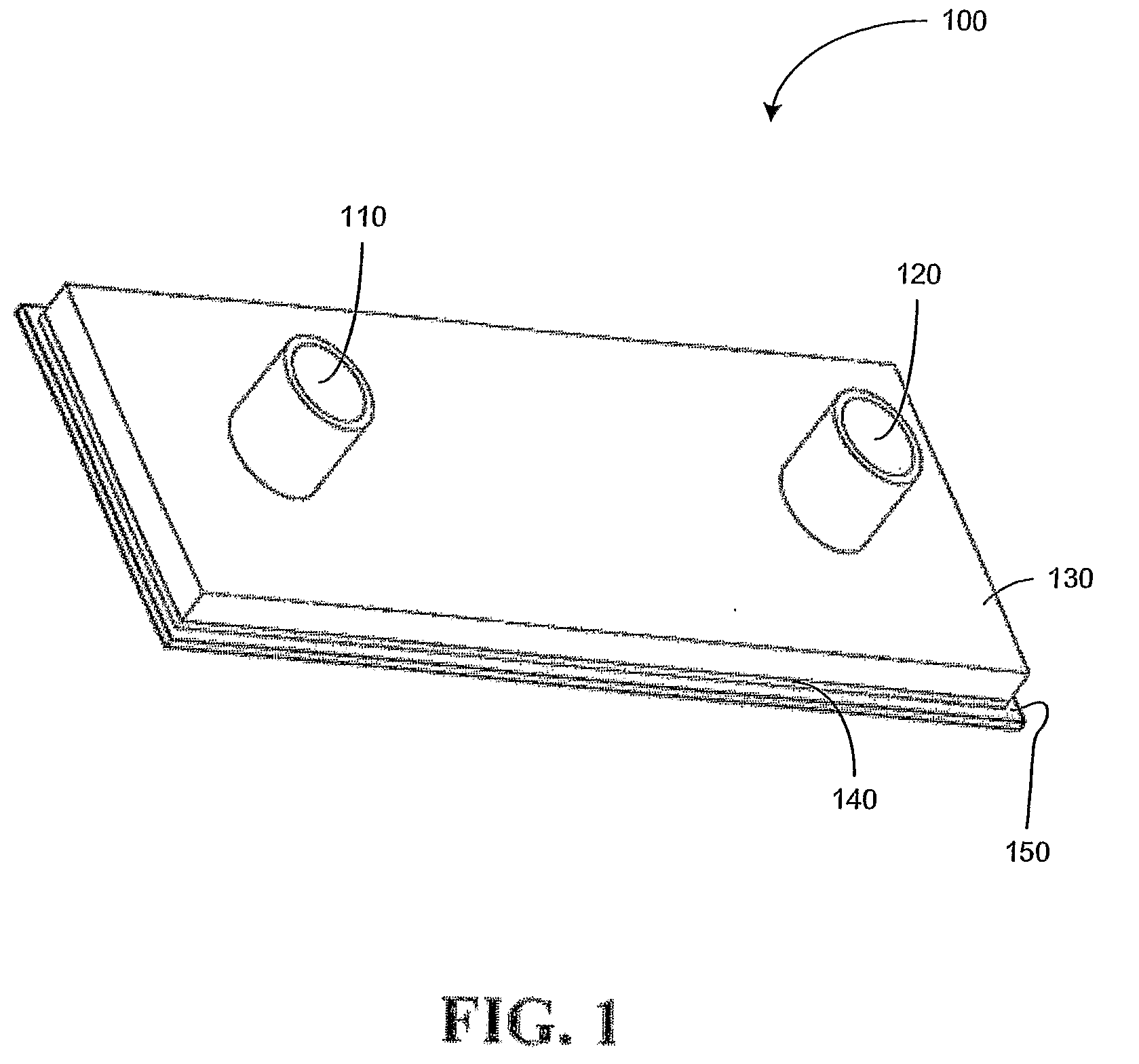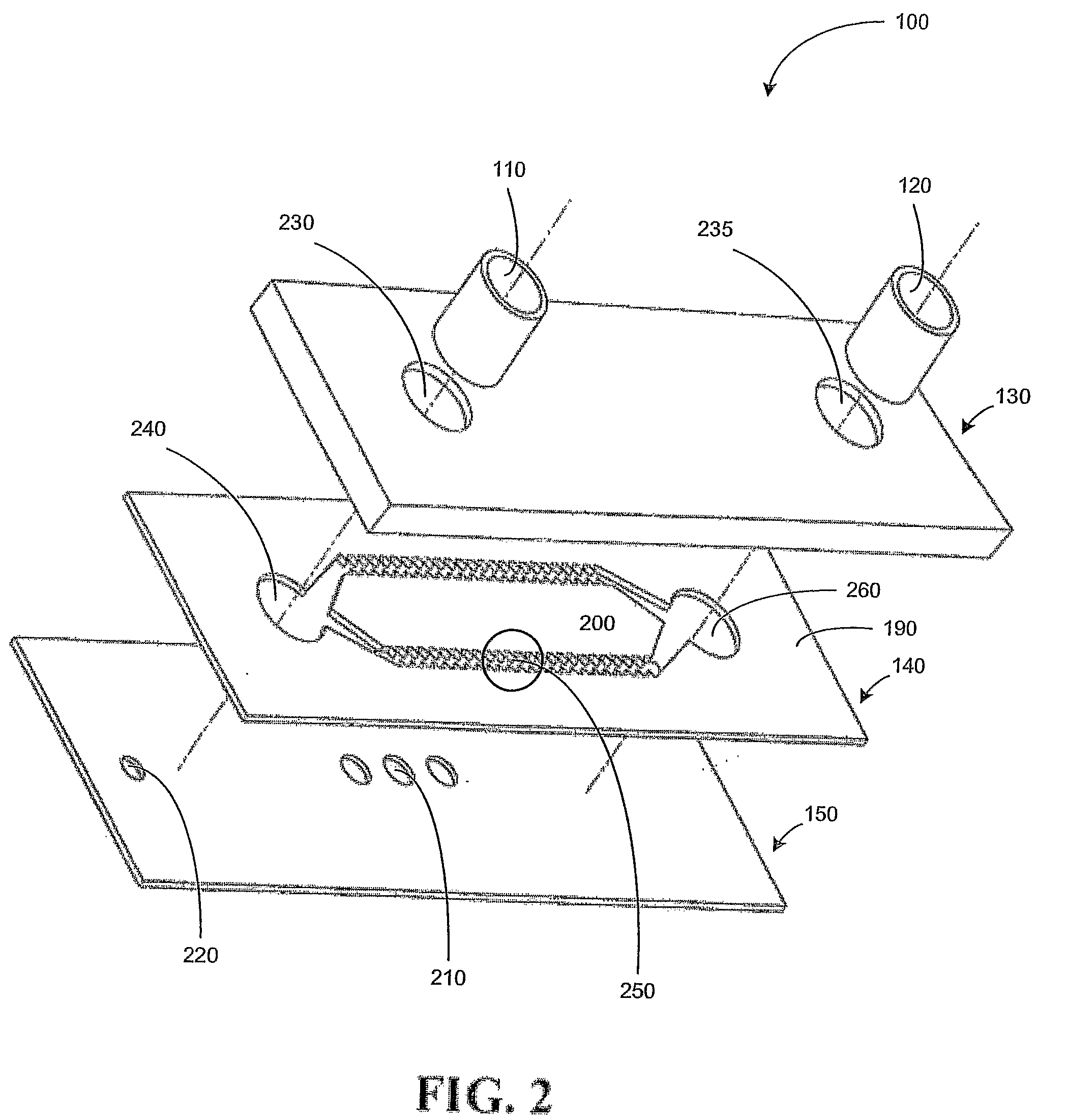Biochip for sorting and lysing biological samples
a biochip and biological sample technology, applied in the field of biological device for manipulating biological samples, can solve the problems of unwanted local electrical fields within the microfluidic region, unwanted electrochemical effects of edge effects in uninsulated areas, and unwanted thermal convection exerting unwanted forces on cells,
- Summary
- Abstract
- Description
- Claims
- Application Information
AI Technical Summary
Benefits of technology
Problems solved by technology
Method used
Image
Examples
Embodiment Construction
[0031]FIGS. 1 to 4 illustrate a device in the form of a biochip 100 exemplary of an embodiment of the present invention. As will become apparent, biochip 100 may be used for dielectrophoretic separation of biological material and lysing.
[0032]As illustrated in FIG. 1, biochip 100 includes an inlet 110, an outlet 120, top, middle and bottom layers 130, 140 and 150. Top layer 130 and bottom layer 150 are each formed as insulating wafers, formed for example composed of a material such as glass. Middle layer 140 is formed of a conductive material, such as for example silicon or metal.
[0033]As illustrated in FIG. 2, a central portion of layer 140 forms a central electrode 200 and may be formed using etching or electroforming. The remainder of layer 140 acts as a bulk electrode 190. All three layers 130, 140, 150 are assembled to create a completely enclosed flow chamber defined by microfluidic channels 250. Top layer 130 and bottom layer 150 form a ceiling and floor of the flow chamber.
[...
PUM
| Property | Measurement | Unit |
|---|---|---|
| radius | aaaaa | aaaaa |
| radius | aaaaa | aaaaa |
| thickness | aaaaa | aaaaa |
Abstract
Description
Claims
Application Information
 Login to View More
Login to View More - R&D
- Intellectual Property
- Life Sciences
- Materials
- Tech Scout
- Unparalleled Data Quality
- Higher Quality Content
- 60% Fewer Hallucinations
Browse by: Latest US Patents, China's latest patents, Technical Efficacy Thesaurus, Application Domain, Technology Topic, Popular Technical Reports.
© 2025 PatSnap. All rights reserved.Legal|Privacy policy|Modern Slavery Act Transparency Statement|Sitemap|About US| Contact US: help@patsnap.com



